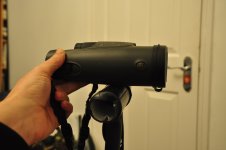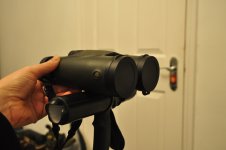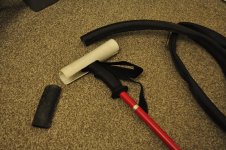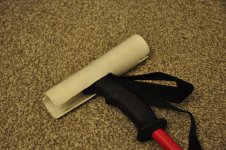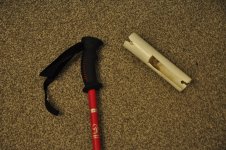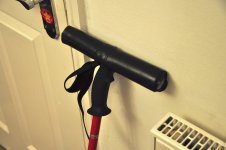Here you go; self-explanatory I hope. There is a walking pole and an old piece of plastic waste pipe with a slot cut out so that it can slide (tightly) along the top of the handle. Then use pieces cut from an old bicycle inner tube to secure the pipe in place from both ends and give it a grippy surface so that the binocular 'sticks' nicely once it is sitting on there. This will need some effort to slide them on tightly but once on it is a very secure arrangement. If your walking pole has a different kind of handle the idea can be adapted.
If you make the pipe long enough, you can rest your wrists on the ends as you focus and aim the binocular. This takes the weight of your arms and also improves stability, so that you can observe for long periods without effort. Setting the pole length correctly and placing the foot in your belt or a pocket also gives you a Finn-stick.
I have various methods but this is the simplest and possibly also the easiest for panning and elevation changes. As a nice touch, I can add memory foam pads where the binocular rests and this increases stability even further because the weight of the binocular makes a dent in the pads and supports it naturally. You can even take your hands away and it will stay! I have not shown this but can if required.
I hope this helps - I find it extremely useful especially for the 12x, and taking a small and light stool (~700g) allows extended periods of detailed observation.






